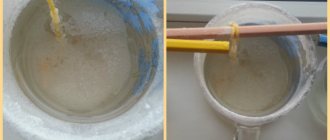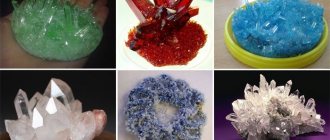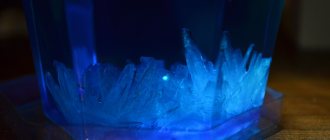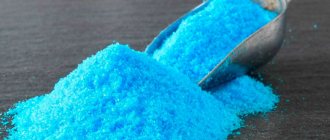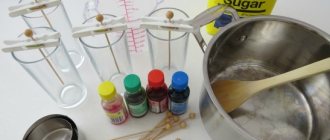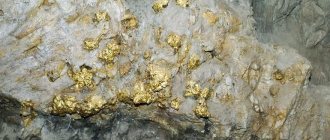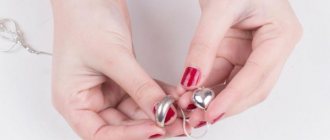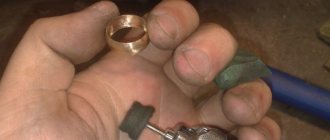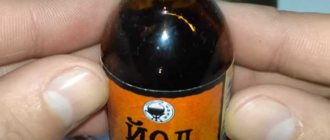Bodies with a crystal lattice have the ability, under certain conditions, to be covered with even, smooth surfaces - edges. This property is widely used in home experiments with alum and copper sulfate: crystals begin to grow from supersaturated cooling solutions. However, there is an opinion that it is possible to grow emeralds at home.
Growing ruby crystals and other artificial stones at home
Artificial stones have long gained popularity in jewelry. After all, for a jeweler, the value of a stone is determined not only by its scarcity in nature. A number of other characteristics play an important role:
- color;
- light refraction;
- strength;
- carat weight;
- size and shape of edges, etc.
The most expensive artificial gemstone is cubic zirconia (synonyms: daimonsquay, jevalite, zirconium cube, shelby). Its price is low - less than $10 per 1 carat (that's 0.2 grams). But it is worth noting that as carats increase, the price increases exponentially. For example, a 10 carat diamond costs 100 times more than a 1 carat diamond.
Artificial crystals of jewelry stones can be grown at home. Most of these experiments do not require special preparation; you do not need to set up a chemical laboratory or even purchase special reagents.
To gain experience in growing crystals, start small. We will share techniques for growing beautiful crystals from anything you can actually find in your own kitchen. You won’t need any additional equipment at all, because everything you need is right on the shelves. We will also consider the technology of growing artificial rubies at home!
Grow kit
Children's art supply stores offer special sets of chemical reagents from which you can obtain green crystals - “emeralds”. Home-grown “minerals” will become a source of pride not only for children, but also for adults.
Cardboard strips are fixed vertically at the bottom of the pan (there are grooves for this purpose), then the reagent is poured. The place where the container is placed must be dry and warm. The next day, crystals will begin to grow on the strips, but not single ones, but aggregates of them.
Homemade “emerald” is fragile: you can’t make a keychain or pendant out of it. But its cultivation is of practical interest: it helps to understand how hydrothermal gems grow in nature.
Hydrothermal emerald
Stones grown in laboratory conditions are in great demand. Emerald, hydrothermal, synthetic or artificial, is an excellent alternative to natural stone. Of course, only if you purchase it intentionally and not accidentally as a fake.
In laboratory conditions it is possible to grow any crystal. It would seem, why is this if there are so many deposits in the world? The point here is not only the price, not only the labor intensity of mineral extraction, and not only the absence of defects in artificial stone. This is an example of a smart approach to using natural resources. Even small pebbles, no larger than a grain of sand, fall into the golden hands of craftsmen, processed, polished and cut. They can be used to decorate items by placing them next to or around larger stones. But there is also fine dust that is no longer suitable for anything. It is she who ends up in the place where hydrothermal emeralds are grown. Often, instead of such dust, craftsmen can use natural stones that were rejected. Other materials can also be used, such as beryllium silicates.
Process Features
The very name “hydrothermal” is already telling. It is not difficult to understand that growing crystals involves water and temperature.
Synthetic stones are grown as follows. The emerald dust remaining from the processing of solid and rejected stones is taken. All this is immersed in a vessel, where the unusable minerals begin to be exposed to chemical components and high temperature, after which they dissolve in water. Next, this vessel, called an autoclave, is sent under the influence of low temperatures, where the crystallization process begins. New minerals settle on a special substrate.
» alt=»»> Another way to grow emerald
How to make artificial stone have some special quality? Today it is possible to grow an emerald with the desired feature. For example, it is unlikely to find a natural mineral that is absolutely transparent. They always contain some inclusions. Their complete absence is only a reason to think about a fake. And not just about an artificial emerald, but about something that has nothing to do with an emerald - it could be a piece of glass or plastic. Artificially grown stone, just like natural stone, has small inclusions. The crystallization process is difficult to control because it follows the same path as in nature.
Benefits of nanoemeralds
Although the characteristics of the synthetic material are the same as those of a natural gem, the price of the former is noticeably lower. In addition, there are a number of other advantages:
- resistance to ultraviolet radiation (natural emerald fades);
- the perfect crystal structure makes the nanomineral stronger and more impact-resistant;
- durability with preservation of color and integrity;
- high degree of transparency (no defects);
- uniform color (no voids).
An important parameter is size . Man can create larger gems than nature. This is due not so much to the duration of the natural process, but to fragility and defects, which is why the nuggets can self-destruct.
It is believed that hydrothermal emerald is inferior in terms of energy field and magical abilities. However, this point is controversial; chiropractors have not reached agreement on this issue.
Making artificial emerald
To make an artificial emerald at home, you should use the hydrothermal method of growing this stone. This method will require the purchase of appropriate equipment - an autoclave that can withstand high temperatures and pressure. Here, as in the case of a unit for growing rubies, you need to turn to specialists - in any case, you need to buy a high-pressure autoclave that is properly designed and manufactured in an industrial environment.
The process of growth of emerald crystals occurs as follows:
- The autoclave gradually heats up.
- Crushed beryl is dissolved in the hot compartment, which is used as a seed. The process takes place in an aqueous environment with the addition of vanadium and chromium, which impart a natural color to the future stone.
- As soon as the temperature reaches 600 0 C and the pressure 1.5 Kbar, crushed beryl dissolved in the hot compartment is transferred to the cold zone of the autoclave, where it settles layer by layer on the seeds, forming an artificial emerald.
The manufacturing technology takes four weeks. The size of artificial emerald obtained in this way is limited by the volume of the autoclave. Despite the expensive production process, the payback is incredibly high! In addition, using this method, you can grow beryl and sapphires of various shades, as well as aquamarine and ruby.
Fact! The global community of gemstone traders puts artificial emeralds produced by hydrothermal methods on a par with natural analogues!
Notes
- R. E. Kane, R. T. Liddicoat (]r.). The Biron hydrothermal synthetic emerald // GEMS & GEMOLOGY, Fall, 1985, p. 156-170.
- K. Schmetzer, L. Kiefert, H.-Jür. Bernhardt, Z. Beili. Characterization of Chinese hydrothermal synthetic emerald. // GEMS & GEMOLOGY, Winter, 1997, p. 276-291.
- Flanigen EM, Mumbach NR Hydrothermal process for growing crystals having the structure of beryl in an acid halide medium. // United States Patent No. 3,567,643; issued March 2, 1971.
- K. Schmetzer, D. Schwarz, H.-J. Bernhardt, T. Hager. A new type of Tairus hydrothermally-grown synthetic emerald, colored by vanadium and copper. // J. Gemm., 2006, 30, 1/2, p.59-74.
Wizards of the emerald business
A thick-walled autoclave with seed plates and diaphragm, natural beryl granules, mineralizers and exceptional intuition - everything you need to grow gemstone crystals
The technology for growing emerald crystals, created by Novosibirsk scientists Alexander Lebedev, Alexey Ilyin, Dmitry Fursenko in the 1970s, is known today throughout the world. Emeralds grown using this original technology are called Russian Emeralds - “Russian emeralds”. And at the very beginning, when the method had not yet spread so widely throughout the world (largely thanks to industrial espionage), they were called nothing more than “Siberian”.
Interesting history facts
Emeralds were known and very popular during the reign of the Ancient Egyptian pharaoh Sesostris the Third. Stones of 1 carat, 5 and much larger were mined in the digs. They were specially mined by order of the great ruler Cleopatra, who was well versed in precious stones and valued them for their beauty, radiance, energy, and unique qualities. They say that the queen owned many mines where they mined crystals.
There are many interesting stories and legends about this amazing natural fossil.
Ancient manuscripts say that the emerald was lost by Satan during the period of his overthrow. It is said that when the stone fell from his crown, it turned into a beautiful cup, which the Queen of Sheba presented as a gift to Solomon. Also, if you believe the manuscripts, then Christ himself held this cup in his hands at the last Holy Supper. After his death, Joseph of Arimathea took a cup and collected in it all the drops of blood at the foot of the cross on which Christ was crucified. So he became the head and founder of the Order of the Holy Grail.
Perfect copy
, created in 1989 on the basis of the United Institute of Geology, Geophysics and Mineralogy of the Siberian Branch of the USSR Academy of Sciences, continues the traditions of Siberian scientists. The characteristics of the crystals grown in Tyrus practically do not differ from natural ones and have no analogues among synthetic crystals, which has been proven by numerous independent examinations carried out by well-known gemological laboratories around the world.
One day, company employees sent their crystals to one of the most reputable American laboratories through third parties. The result was as expected: we received a certificate that stated in black and white that all the stones were natural. This peculiar examination procedure was repeated several times. “We have several certificates that indicate that all our products are genuine. But we don’t make a business out of this, we don’t deceive anyone - we say that all the stones are grown. We were just interested, and probably needed it for self-affirmation. Somewhere in Pakistan our stones may be sold at retail as natural stones. But we no longer control it. In general, our crystals are very easy to distinguish from real ones. They turn out too perfect, without any foreign impurities. In nature, good, clean stones are rare, mostly with some kind of defects,” says Oleg Holdeev, General Director of Tyrus LLC, who has headed the company from the first day of its foundation.
All other hydrothermal conditions being equal
The method that has conquered the world is called hydrothermal. “Crystals grow here in the same way as in the bowels of the earth. It just happens faster at higher pressures and temperatures. If in nature it is a thousand years, then in our country it is two to three months. The only thing we speed up is time. In principle, the process is the same. It is very important that with the hydrothermal method it is possible to purposefully change certain properties of crystals, for example, optical or color range,” says Oleg Holdeev.
The hydrothermal method is used to grow crystals that are difficult or impossible to grow using other methods. At high temperatures (up to 700 °C) and pressures (up to 3,000 atmospheres), aqueous solutions of salts are capable of actively dissolving compounds that are practically insoluble under normal conditions.
For hydrothermal growth of beryl (emerald, aquamarine), corundum (ruby, sapphire) or alexandrite crystals, special durable steel vessels are used - autoclaves that can withstand such extreme pressures and temperatures. In some cases - for example, when growing quartz crystals - flaw detection of the autoclave walls is carried out each time before the growth process begins. “The pressures are very high, and if the autoclave breaks, there will be an explosion. Naturally, we don’t work with such autoclaves,” says Victor Thomas.
Crystal growth occurs as follows. At the bottom of the autoclave, heated from below and cooled from above, a soluble substance is placed, which is called the charge. Granules of natural beryl, a mineral quite common in nature, unlike, say, aquamarine, and therefore relatively cheap, can serve as such. Then a special salt part of the solution is poured in - mineralizers. In the upper part of the autoclave, seed plates or seeds are installed, cut in a certain direction from the crystal of the substance being grown. It is on the seeds that crystals will grow. And in the middle there is a so-called diaphragm. As Victor Thomas explains simply, it is a steel plate with holes in it that serves to isolate (separate) areas of low and high temperature.
The hydrothermal solution circulates between the granules of the charge, becoming saturated with the substance of the crystal being grown, and at the same time it is heated. The hot and therefore lighter solution rises to the top of the autoclave, where it cools. The cold, high-density lean solution falls down. The cycle is repeated until the charge substance is completely transferred to the seeds.
“Typically, one autoclave uses about 100 grams of beryl,” explains Victor Thomas. “And how much is the output?” - I ask. “How much do you want or how much do you get?” - Viktor Gabrielovich “clarifies” with a smile and answers the question: “In a successful experiment, as much as you download, that’s what comes out. That is, the entire charge is deposited on the seed plates. Of course, a few grams of beryl are constantly contained in the solution, but this is a very small amount.”
“Isn’t it easier, isn’t it cheaper to just process natural beryl and not grow the crystals artificially?” - I ask another question. “The fact is that the color of emerald is due to the presence of impurities of chromium and vanadium. To get an emerald, you need to somehow introduce these impurities into beryl. Some manufacturers use special ion cannons to fire at a piece of jewelry-quality beryl. I think these are fraudulent schemes, since the crystal is painted green only from the surface; chromium and vanadium ions cannot travel far, forming only the thinnest film. The only way to introduce chromium and vanadium ions into beryl is to dissolve it and grow it again,” Victor Thomas categorically states.
People who make emeralds
The history of growing artificial gemstones was started by IG Farben Industry, the first in the world to grow emeralds from melt solutions. The specialists of this German company managed to select a special set of salts, the melt of which dissolved the beryl components. However, the Second World War dictated its terms. Tanks were needed, not emeralds, and the process of producing artificial precious stones stalled.
In the 1950s, everything started anew. Crystals have already been grown not only from solutions in a melt, but also from a hydrothermal high-temperature solution. “The best results were apparently achieved from solutions in the melt. At least, the world-famous company Chatham, which was the first to use the combination of created gems (created stones - Ed.), used exactly this method. The technology of hydrothermal emerald cultivation developed in parallel. The American researcher E. Flanigan succeeded most in this area. Unfortunately, when using her method, the process of crystal growth died out quite quickly, so it was necessary to grow the crystals for two weeks, then remove them and replant them in order for them to grow. Foreign phases formed, and the beryl components dissolved very poorly, so the speed dropped to virtually zero,” says Victor Thomas.
Crystal growing technologies in the USSR began to actively develop in the early 1970s, when academician Vladimir Sobolev set his colleagues the task of growing our emerald using our technology. Vladimir Stepanovich did not exaggerate the urgency of this task at all, predicting high demand for emerald in the coming years. And he turned out to be right - soon a real boom began.
Soviet experimental mineralogists followed two paths. “The first way is to use the flux method: growing precious stones from molten salts, when the desired mineral is melted in a special solution. This, of course, happens in nature, but other processes are natural for beryl, emerald, and aquamarine crystals - they grow as a result of hydrothermal synthesis,” reports Victor Thomas and characterizes the flux method as unstable: “In one experiment, a beautiful emerald crystal could be obtained, but in the other there are intermediate substances.” One thing was absolutely clear: the method needed to be improved. Then the idea arose to begin developing an original - hydrothermal - scheme for growing emerald. During the cold Siberian winter of 1972, young scientists Alexander Lebedev, Alexey Ilyin, and Dmitry Fursenko were involved in studying the process of hydrothermal synthesis and growth of emerald crystals. All research they conducted was kept in the strictest secrecy, and the results were immediately reported to Moscow. Two years later, the experiments, not without the participation of the authorities, were stopped, and only 17 years later a group of scientists, led by leading expert on hydrothermal synthesis Alexander Lebedev, whose name was kept secret by the Soviet regime for many years, resumed work. Alexander Sergeevich became the first Soviet specialist to receive two international certificates at once, confirming his high qualifications as a gemologist in the field of identification and determination of the properties of natural and synthetic precious stones.
Notes
- R. E. Kane, R. T. Liddicoat (]r.). The Biron hydrothermal synthetic emerald // GEMS & GEMOLOGY, Fall, 1985, p. 156-170.
- K. Schmetzer, L. Kiefert, H.-Jür. Bernhardt, Z. Beili. Characterization of Chinese hydrothermal synthetic emerald. // GEMS & GEMOLOGY, Winter, 1997, p. 276-291.
- Flanigen EM, Mumbach NR Hydrothermal process for growing crystals having the structure of beryl in an acid halide medium. // United States Patent No. 3,567,643; issued March 2, 1971.
- K. Schmetzer, D. Schwarz, H.-J. Bernhardt, T. Hager. A new type of Tairus hydrothermally-grown synthetic emerald, colored by vanadium and copper. // J. Gemm., 2006, 30, 1/2, p.59-74.
Is it possible to grow emerald at home?
It is known that under natural conditions these minerals grow and develop over thousands of years or more, but growing artificial stone takes only one to two months. In terms of external characteristics, synthetic pebbles may look more attractive than natural ones, as they look perfect. The unnatural gem will not contain any foreign inclusions; it is well suited as a decoration for gold and silver items.
To create a mineral at home, some sources advise resorting to the hydrothermal method, that is, purchasing a special vessel that can withstand pressure and high temperatures, contact a specialist who can set it up, and then wait for the emerald to grow.
In fact, scientists have not yet invented a way to grow minerals at home; this is done in specially equipped laboratories using a complex technological process under the supervision and control of competent specialists. Synthetic gems are grown from the powder that remains after a natural emerald is cut.
The process of creating an artificial pebble in the laboratory is as follows:
- The powder from cutting real stones is placed in an autoclave;
- It is exposed to chemicals and high temperatures;
- Next, the vessel is placed in a zone with low temperatures to carry out the crystallization process.
It is known that the process of origin of a real mineral occurs in approximately the same way, but it takes a lot of time, and you can enjoy the beauty and grace of an artificial gem after a month.
Goodbye, dear readers! Don't forget to subscribe to our updates and tell your friends about interesting articles using social networks.
Organic salts
It is easy to grow a ruby crystal from various salts:
- copper sulfate;
- potassium alum;
- regular salt.
The longest salt-based process, the most beautiful specimens are obtained from vitriol. The production of ruby crystals is based on the following stages:
- Preparing the container. It should hold salt and a saturated water-salt solution. They take hot water. The process is gradual. Dilute two tablespoons with water and mix thoroughly. Then salt is added and mixed. You need to sprinkle until the salt stops dissolving. To maintain the proportions, take a hint: a table of the solubility of different salts in 100 ml of water, their relationship with the temperature of the liquid.
- Filtration of the solution. The solution must be clean. Dirt impurities will ruin the structure of the stone. Defects will be visible in it. The solution remains for 24 hours. During this period, crystals form at the bottom of the container. They will become the basis of the ruby.
- Growth of an artificial mineral. A fishing line is tied to the stone formed at the bottom of the glass. It is wound around a pencil or wooden stick. The device is installed on the container. The crystal is in solution, in a suspended state. Water tends to evaporate, the saturated saline solution releases excess, which is fixed on the resulting sample.
- Adding salt solution. You always need a certain amount of water; if it becomes too little, the crystal will stop growing. At normal room temperature, water is added once every 2 weeks.
To obtain rubies at home, you will have to wait about 3 months. Then the stone is freed from the saline solution and dried with a soft cloth. The sample is coated with colorless nail polish in several layers.
Advice from experienced crystal creators. The salt solution should be at the same temperature as the water in the container. The crystal grows at a temperature slightly lower, but high rises in solutions spoil and stop the growth.
Notes
- R. E. Kane, R. T. Liddicoat (]r.). The Biron hydrothermal synthetic emerald // GEMS & GEMOLOGY, Fall, 1985, p. 156-170.
- K. Schmetzer, L. Kiefert, H.-Jür. Bernhardt, Z. Beili. Characterization of Chinese hydrothermal synthetic emerald. // GEMS & GEMOLOGY, Winter, 1997, p. 276-291.
- Flanigen EM, Mumbach NR Hydrothermal process for growing crystals having the structure of beryl in an acid halide medium. // United States Patent No. 3,567,643; issued March 2, 1971.
- K. Schmetzer, D. Schwarz, H.-J. Bernhardt, T. Hager. A new type of Tairus hydrothermally-grown synthetic emerald, colored by vanadium and copper. // J. Gemm., 2006, 30, 1/2, p.59-74.
How to distinguish an emerald from a fake?
Before purchasing emerald jewelry, you should thoroughly study its properties. Also decide which one is better to take - natural or synthetic. It is important to remember that natural stones are much more expensive than fakes, which means you should pay attention to the price.
When choosing a product, you should consult a jeweler. He will tell you how to choose an emerald and not make a mistake in purchasing. You also need to request certificates of authenticity, an expert report that states whether the stone is real or not. You also need to check whether there is permission to sell. If everything is fine with the general documents, then you can choose decoration.
Prices
Another feature that sets hydrothermal emerald apart is its price. Of course, it is much lower than a stone of the same size grown by nature.
The average price for a cut stone is $30-50 per carat. In some cases, the cost may be higher - for example, for stones with impeccable clarity and excellent cutting.
How to distinguish an emerald from a fake
Modern technologies have come a long way. Even experienced professionals cannot distinguish a fake from a real emerald at first glance and without examination. To determine the origin of a stone, you need a light filter, a refractometer and a magnifying glass. From this list, the average buyer will only find the third item. But there are several external signs to help when buying jewelry:
Color. The palette of emeralds ranges from juicy herbaceous to dull green. The more chromium in the stone, the richer its color and the higher the price. Light stones are inferior to them in cost. And the fakes have a noticeable yellowish tint when exposed to light.
Strength. On the Mohs scale, hardness is 7.5-8. For a diamond, this indicator is 10. But scratching the mineral or scratching the glass with it to determine its authenticity is a bad idea, because you can damage the surface of the insert.
Edges. An emerald has clear and even edges, while a fake has a slightly “softer” shape.
Purity. Insertion, noticeable when stones are illuminated in the sun or under a lamp, is another indicator of natural stone. Emeralds without visible chips or cracks are more of a happy accident than a rule. Inclusions can be gaseous, liquid or solid. Real emeralds have at least one type of inclusion. But you should be careful: doublets also have inclusions at the gluing site.
A real emerald has minor defects: inclusions, bubbles, internal cracks, scratches and abrasions. This is often one of the keys to the authenticity of a stone. Natural internal flaws are more common in emeralds than in rubies and sapphires. There is even a special name for them - “forest”. Moreover! There are cases when stones with such wood are more expensive than those that are impeccable in purity. High-quality stones are cut, specimens with a high rate of defects are processed into a cabochon in the form of a hemisphere. There is also an emerald step cut with an octagonal emerald shape.
6. Ennoblement. To improve the stone, the emerald is impregnated with cedar oil, as well as colorless or green pigment. This makes microcracks and other flaws less noticeable. This method is approved by gemologists - stone specialists. There are also more crude methods using special pastes, resins or polymers. At the same time, for large stones there is a rule: in the certificate for the stone this must be indicated as minor or insignificant. no oil mark in the quality certificate
.
Where are emeralds mined?
The origin of the emerald directly affects its shade and price. Emerald deposits are located in Colombia (from 50 to 95%), India, Pakistan, Egypt, and the Urals. Experts determine it by inclusions characteristic of a particular region. When examining stones, experts use color standards and colorimetric tables. Colombian emeralds are considered one of the best. They have a stunning bright green color and contain chromium and vanadium. Emeralds from Zambia are highly prized: they have a deep dark color with a bluish tint.
Let's sum it up
Let's be honest, distinguishing an emerald from an artificial stone at home and even in a store is a very controversial idea for a person who does not have special knowledge and education. What is the client's power?
- Be able to read the jewelry tag, which contains information about the manufacturer and the characteristics of the stone: color, clarity, cut quality.
- Buy stones and jewelry in trusted stores and from jewelers whose activities are legalized by the state.
- Be careful when purchasing, carefully inspect the jewelry for the sample and quality of metal and stone. The work must be neat, the stone is securely fastened, and on the decoration.
- If you have a suspicion or pure interest, contact a gemological center for a professional examination of the stone. But keep in mind: for the study to be adequate, you will need to remove the insert from the jewelry.
None of the above methods and signs makes it possible to say 100% about the origin of the mineral. Determining the authenticity of an emerald at home is difficult: this requires special equipment.
